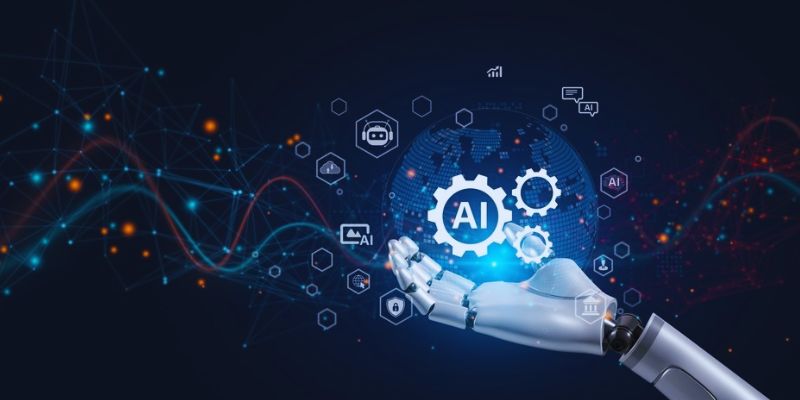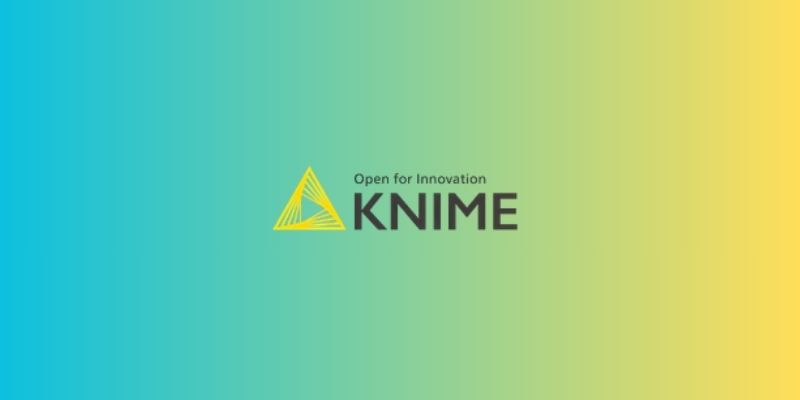Advertisement
AI has improved operational efficiencies, elevated personalized customer experience, and provided innovative solutions to many challenges. Despite its potential benefits and opportunities, many organizations still struggle to fully integrate AI into their system.
No doubt, pilot projects are taking place, but no clear progress has been made. It shows that there must be some obstacles that prevent AI adoption in enterprises. If you are also facing the same issue, worry not. In this article, we will discuss eight obstacles that prevent companies from implementing AI into their system and provide the best possible solutions for successful integration. So, let's get into the details without any further delay!

Most business leaders say that their teams resist adopting AI because they fear loss of jobs and/or are uncomfortable shifting their old ways, among many other reasons. Here are some common barriers that hinder AI adoption in enterprises:
The shift towards AI must begin with the people sitting at the top. However, a barrier towards AI opportunities can be built if top leadership cannot move away from traditional methods. This reluctance can affect a business's transformation journey. Top leadership needs to have an initiative and a forward-thinking approach. Those who have adapted to the change should show reluctant leaders the opportunities and implementation of AI. It will make reluctant leaders reevaluate their strategies within their organization and might want to bring the change.
AI technology always brings unexpected outcomes that can provoke certainty. This uncertainty can increase fear in colleagues regarding job displacement or massive organizational transformation. It is important to work in an environment of transparency to overcome these concerns. Explain to employees how AI can help in human work instead of completely displacing jobs. Demonstrate how AI can help in decision-making and ultimately improve operational performance. By showcasing the positive attributes of AI, you may help your employees overcome their fears.
AI is still a word from the future for many employees. They still think AI is a future technology or application that will produce extraordinary results. These misunderstandings regarding AI and opportunities can hinder accepting AI in their organization. But, the good thing is that organizations can easily address these misconceptions regarding AI. For example, businesses can conduct seminars and workshops to highlight the practical benefits of AI and share real-world examples. It will educate the employees regarding the opportunities that come with AI and motivate them to implement AI into their organization.

How well AI systems work depends upon how accurate the data is provided. Data availability, quality, and accuracy can be a barrier because AI systems thrive on data. A crucial step is to establish a comprehensive data governance strategy. Establishing such a strategy will improve the quality of your data and processes. You must first invest in technologies that manage and improve data quality to gain all the benefits. Furthermore, invest in technologies that offer data enrichment and cleansing to provide well-organized data for AI applications.
Many employees see AI as just another tool and underestimate the potential and opportunities of AI, ignoring training and support that is needed to harness its benefits. Even if you implement AI, it will still lag if no proper talent is present to drive it. You may recruit AI experts; however, it is not a beneficial option for some organizations due to budgetary limits. In that case, you may conduct a training program for your employees regarding the use of AI. You may also get insights from managed service partners or business analysts. These professionals can help you find the right way to implement your AI strategy.
As discussed earlier, AI thrives on data, including your organization's sensitive data. It can be a prominent barrier to embracing AI in the enterprise. This security risk is not to be taken lightly. You can implement some practicable measures to mitigate the risk. You can implement strict data governance frameworks to mitigate security risks. You can also establish strong AI ethics policies and ensure that the policies comply with relevant laws and regulations. Implement the AI system using data encryption and anonymization to avoid associating the data with any individual.
One of the greatest challenges in AI adoption is integration with legacy systems. They cause all kinds of technical difficulties. You don't necessarily have to modernize your legacy system to mitigate the challenges. You can implement custom APIs and middleware. Implementing these will make AI integration with legacy systems easier. You can team up with a digital transformation partner to identify your organization's needs related to custom integration. They will help you design the solution that caters to your organization's needs the most.
The initial costs of AI adoption are high and can serve as a barrier, preventing organizations from prioritizing the implementation of AI. There are still ways to adopt AI without farfetched budgets. You can apply a phased investment approach. Starting with smaller-scale projects can help demonstrate AI's return on investment (ROI). With the pilot project's successful implementation and positive outcomes, persuading investors and expanding your project can be easy. The more success you get, the more investment will follow, and your organization will gradually settle with AI applications.
Adopting AI solutions in the organization can be difficult, and several challenges may come your way during the whole process. The most common barriers many organizations face include reluctant leadership, resistance to change, and fear of unexpected outcomes such as job displacement. Besides that, other barriers businesses can face are misconceptions about AI's potential and related opportunities, data availability, accuracy and quality, and insufficient skills or expertise to run the AI system. However, the good part is that with the awareness of the obstacles and the right strategic planning, you can overcome these adoption challenges and benefit from AI power.
Advertisement

Trying to choose between Bard, ChatGPT, and offline Alpaca? See how these language models compare in speed, privacy, accuracy, and real-world use cases

Knime enhances its analytics suite with new AI governance tools for secure, transparent, and responsible data-driven decisions

Explore the various ways to access ChatGPT on your mobile, desktop, and through third-party integrations. Learn how to use this powerful tool no matter where you are or what device you’re using

Discover 8 powerful ways AI blurs the line between truth and illusion in media, memory, voice, and digital identity.

Learn why businesses struggle with AIs: including costs, ethics and ROI, and 10 things they can do to maximize output.

Want to create marketing videos effortlessly? Learn how Zebracat AI helps you turn your ideas into polished videos with minimal effort

Explore how IBM's open-source AI strategy empowers businesses with scalable, secure, innovative, and flexible AI solutions.

Many organizations still lag in adopting AI due to reluctant leadership, fear of unexpected outcomes, and lack of expertise

Curious about AI prompt engineering? Here are six online courses that actually teach you how to control, shape, and improve your prompts for better AI results

Wondering if third-party ChatGPT apps are safe? Learn about potential risks like data privacy issues, malicious software, and how to assess app security before use

Curious about LPU vs. GPU? Learn the real differences between a Language Processing Unit and a GPU, including design, speed, power use, and how each performs in AI tasks

Consider model size, cost, speed, integration, domain-specific training, and ethical concerns when you choose the right LLM